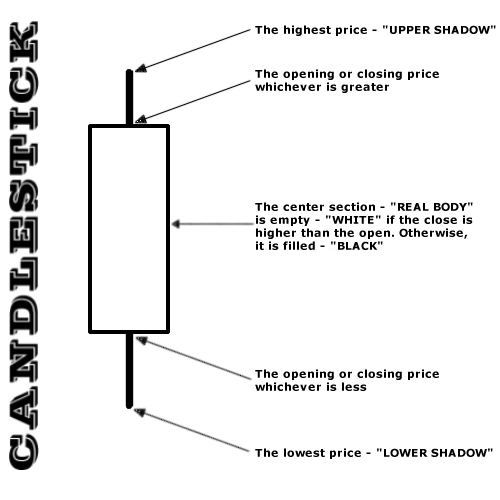JAPANESE CANDLESTICKS
In the 1600s, the Japanese developed a method of technical analysis to analyze the price of rice contracts. This technique is called candlestick charting. Steven Nison is credited with popularizing candlestick charting and has become recognized as the leading expert on their interpretation.
Candlestick charts display the open, high, low, and closing prices in a format similar to a modern-day bar-chart, but in a manner that extenuates the relationship between the opening and closing prices. Candlestick charts are simply a new way of looking at prices, they don't involve any calculations.
Each candlestick represents one period (e.g., day) of data. The figure below displays the elements of a candlestick:

The interpretation of candlestick charts is based primarily on patterns. The most popular patterns are thoroughly explained in this website. The patterns are examined in three main groups as “Bullish”, “Bearish”, and “Neutral”. These groups are further subdivided with respect to the type of the patterns as “Reversal”, “Continuation”, and with respect to their reliability as “High Reliability”, “Medium Reliability” and “Low Reliability”.
Candlestick charts are flexible, because candlestick charts can be used alone or in combination with other technical analysis techniques. A significant advantage attributed to candlestick charting techniques is that these techniques can be used in addition to, not instead of, other technical tools. In fact this system is superior to other technical tools. Candlestick charting techniques provide an extra dimension of analysis. As with all charting methods, candlestick chart patterns are subject to interpretation by the user. As you gain experience in candlestick techniques, you will discover which candlestick combinations work best in your market.